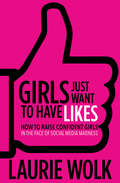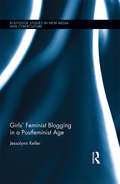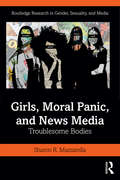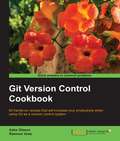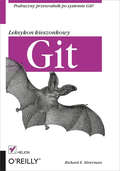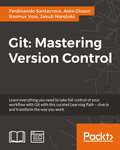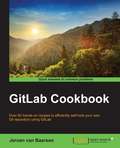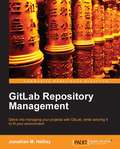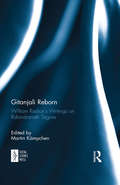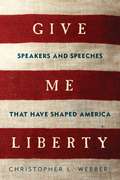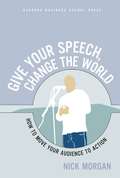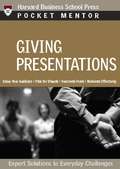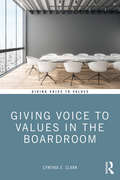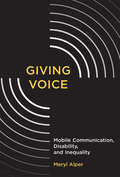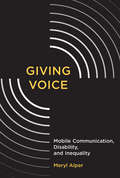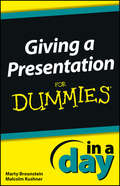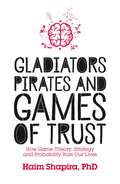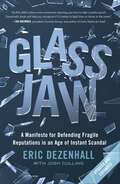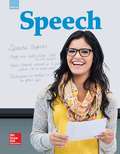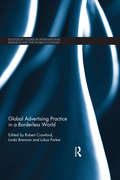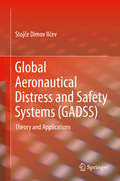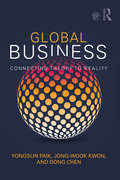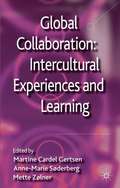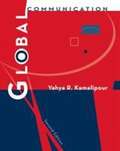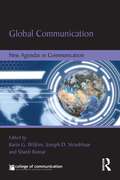- Table View
- List View
Girls Just Want to Have Likes: How to Raise Confident Girls in the Face of Social Media Madness
by Laurie WolkAn educator and leadership coach teaches parents how to cut through daughters&’ addiction to social media and reclaim family connection. In today&’s age of social media, young girls are learning crucial life lessons from dubious mentors like the Kardashians and other Instagram &“celebrities.&” Many are so thoroughly addicted to social media they are uncomfortable communicating face to face. It&’s no wonder parents across the country are afraid for their daughters&’ self-esteem and ability to thrive in the real world. In Girls Just Want to Have Likes, educator and leadership coach Laurie Wolk offers smart advice on how parents can take control, communicate meaningfully with their children, and get back to raising confident capable young women. Laurie shows parents how to reclaim their roles as mentor and guide, helping their daughters unwind and decode the toxic messages social media broadcasts. By applying Laurie&’s methods, social media will start to fade into the background of your household, allowing family connection to take center stage—and letting your daughter shine.
Girls' Feminist Blogging in a Postfeminist Age (Routledge Studies in New Media and Cyberculture)
by Jessalynn KellerGirls’ Feminist Blogging in a Postfeminist Age explores the practices of U.S.-based teenage girls who actively maintain feminist blogs and participate in the feminist blogosphere as readers, writers, and commenters on platforms including Blogspot, Facebook, Twitter, and Tumblr. Drawing on interviews with bloggers between the ages of fifteen and twenty-one, as well as discursive textual analyses of feminist blogs and social networking postings authored by teenage girls, Keller addresses how these girls use blogging as a practice to articulate contemporary feminisms and craft their own identities as feminists and activists. In this sense, feminist girl bloggers defy hegemonic postfeminist and neoliberal girlhood subjectivities, a finding that Keller uses to complicate both academic and popular assertions that suggest teenage girls are uninterested in feminism. Instead, Keller maintains that these young bloggers employ digital media production to educate their peers about feminism, connect with like-minded activists, write feminist history, and make feminism visible within popular culture, practices that build upon and continue a lengthy tradition of American feminism into the twenty-first century. Girls’ Feminist Bloggers in a Postfeminist Age challenges readers to not only reconsider teenage girls’ online practices as politically and culturally significant, but to better understand their crucial role in a thriving contemporary feminism.
Girls, Moral Panic and News Media: Troublesome Bodies (Routledge Research in Gender, Sexuality, and Media)
by Sharon R. MazzarellaMazzarella examines the representational politics behind journalistic constructions of US girls and girlhood through a series of contemporary in-depth case studies which work to document a wider cultural moral panic about the troublesome nature of girls’ bodies. The public concern and media fascination with youth so evident in the United States today is a century-old phenomenon. From the flappers of the 1920s to the bobbysoxers of the 1950s, from the hippies of the 1960s and on to the ever-present pregnant teens, this fascination has played out in the media and has consistently focused on (primarily White, middle-class, heterosexual) girls. A growing body of research has revealed the manner in which journalistic practice constructs such girls as problems. Girls, Moral Panic, and News Media takes a broad look at U.S. news media constructions of girls, girlhoods, and girl’s bodies/sexualities through a series of contemporary in-depth case studies including news coverage of the 2008 Gloucester (MA) High School "pregnancy pact," teen gun control activist Emma González, and the sexualization of "early puberty." In general, the news media constructs girls’ bodies as troublesome and in need of adult surveillance and policing. These case studies document a cultural obsession with girls’ bodies—an obsession that often approaches moral panic. This book will be key reading for researchers and instructors in the rapidly growing international and interdisciplinary field of Girls’ Studies, and scholars of Media Studies, Cultural Studies, Gender Studies, Communication and Journalism.
Git Version Control Cookbook
by Aske Olsson Rasmus VossThis practical guide contains a wide variety of recipes, taking you through all the topics you need to know about to fully utilize the most advanced features of the Git system. If you are a software developer or a build and release engineer who uses Git in your daily work and want to take your Git knowledge to the next level, then this book is for you. To understand and follow the recipes included in this book, basic knowledge of Git command-line code is mandatory.
Git. Leksykon kieszonkowy
by Richard E. Silverman"Podr?czny przewodnik po Git!Jeszcze do niedawna w?ród systemów kontroli wersj? fotel lidera zajmowa? SVN. Jednak ta sytuacja w ostatnich latach ulega diametralnej zmianie. Rynek systemów kontroli wersji opanowa?y systemy rozproszone, z Gitem na czele. Czemu zdoby?y tak? popularno??? Dzi?ki zastosowaniu Gita ka?dy programista dysponuje swoj? lokaln?, kompletn? kopi? ca?ego repozytorium. Pozwala to na b?yskawiczne wykonywanie typowych zada? i korzystanie z mo?liwo?ci kontroli wersji bez wp?ywu na repozytoria innych osób. A? do momentu, gdy stwierdzisz, ?e chcesz podzieli? si? efektami pracy z innymi.Brzmi interesuj?co? Je?li chcia?by? zg??bi? system Git, trafi?e? na doskona?? ksi??k?. Dzi?ki jej niewielkim rozmiarom mo?esz mie? j? zawsze przy sobie. Zmiana SVN na Git oprócz poznania nowych poj?? wymaga zmiany sposobu my?lenia. Ten leksykon pozwoli Ci w ka?dej chwili sprawdzi?, jak stworzy? nowe repozytorium czy ga??? oraz jak wprowadzi? zmiany i przes?a? je na centralny serwer. Ponadto dowiesz si?, jak ?ledzi? zdalne repozytoria, przegl?da? histori? zmian i scala? wersje. To doskona?a lektura dla wszystkich osób chc?cych b?yskawicznie pozna? mo?liwo?ci Gita i zacz?? stosowa? go w codziennej pracy.Dzi?ki tej ksi??ce: poznasz filozofi? pracy z Gitem stworzysz repozytorium i zaczniesz z niego korzysta? nauczysz si? pracowa? z ga??ziami kodu biegle opanujesz system GitPoznaj rozproszony system kontroli wersji!"
Git: Mastering Version Control
by Aske Olsson Rasmus Voss Ferdinando Santacroce Jakub NarebskiLearn everything you need to take full control of your workflow with Git with this curated Learning Path - dive in and transform the way you work About This Book * Master all the basic concepts of Git to protect your code and make it easier to evolve * Filled with practical recipes that will teach you how to use the most advanced features of the Git system * Harness the full power of the Git version control system to customize Git behavior, manipulate history, integrate external tools, and explore platform shortcuts Who This Book Is For This learning path is for software developers who want to become proficient at using the Git version control system. A basic understanding of any version control system would be beneficial. What You Will Learn * Transport your work to a remote repository in a centralized manner * Experiment with your code without affecting functional code files * Explore some tools used to migrate to Git from other versioning systems without losing your development history * Understand the Git data model and how you can navigate the database with simple commands * Debug with Git and use various techniques to find faulty commits * Customize Git behavior system-wide, on a per-user, per-repository, and per-file basis * Master administering and setting up Git repositories, configuring access, finding and recovering from repository errors, and performing repository maintenance * Chose a workflow and configure/set up support for the chosen workflow In Detail Git is one of the most popular types of Distributed Version Control System. Since its inception, it has attracted skilled developers due to its robust, powerful, and reliable features. Like most powerful tools, Git can be hard to approach for the newcomers. However, this learning path will help you overcome this fear and become adept at all the basic and advanced tasks in Git. This course starts with an introduction to version control systems before you delve deeply into the essentials of Git. This serves as a primer for the topics to follow such as branching and merging, creating and managing a GitHub personal repository, and fork and pull requests. You'll also learn how to migrate from SVN using Git tools or TortoiseGit and migrate from other VCSs, concluding with a collection of resources, links, and appendices. As you progress on to the next module, you will learn how you can automate the usual Git processes by utilizing the hook system built into Git. It also covers advanced repository management, including different options to rewrite the history of a Git repository before you discover how you can work offline with Git, how to track what is going on behind the scenes, and how to use the stash for different purposes. Moving forward, you will gain deeper insights into Git's architecture, its underlying concepts, behavior, and best practices. It gives a quick implementation example of using Git for a collaborative development of a sample project to establish the foundation knowledge of Git operational tasks and concepts. By exploring advanced Git practices, you will attain a deeper understanding of Git's behavior, allowing you to customize and extend existing recipes and write your own. This Learning Path is a blend of content, all packaged up keeping your journey in mind. It includes content from the following Packt products: * Git Essentials, Ferdinando Santacroce * Git Version Control Cookbook, Aske Olsson and Rasmus Voss * Mastering Git, Jakub Narebski Style and approach Its step-by-step approach with useful information makes this course the ultimate guide to understanding and mastering Git. This course will show the road to mastery example by example, while also explaining the mental model of Git.
GitLab Cookbook
by Jeroen Van BaarsenThis book is aimed at developers and devops that have a GitLab server running, and want to be sure they use it to its full potential. This book will also be useful for people looking for a great Git platform, and learn how to set it up successfully. Some system administrating experience on a UNIX-based system would be useful, but is not required.
GitLab Repository Management
by Jonathan M. HetheyA simple, easy to understand tutorial guide on how to build teams and efficiently use version control, using GitLab.If you are a system administrator in a company that writes software or are in charge of an infrastructure, this book will show you the most important features of GitLab, including how to speed up the overall process
Gitanjali Reborn: William Radice’s Writings on Rabindranath Tagore
by Martin KämpchenRadice, himself a recognized English poet and erudite scholar, delved into the deeper meaning of Tagore’s poems and songs, and discussed his ideas on education and the environment with an insight probably no other Westerner has. He also translated Tagore’s short stories and short poems, and finally was able to make a complete breakthrough by translating Gitanjali afresh and restoring Tagore’s original English manuscript. Martin Kämpchen lives in Santiniketan, West Bengal and Germany and is a reputed Tagore scholar and writer.
Give Me Liberty: Speakers and Speeches that Have Shaped America
by Christopher L. WebberSure to become a classic of American oratorical history, ?Give Me Liberty reveals the enduring power of America's quest for a freer and more just society, and the context of the speeches and speakers--from Daniel Webster and Patrick Henry to Martin Luther King and Ronald Reagan--that gave voice to the struggle. ? "Give me liberty," demanded Patrick Henry, "or give me death!" Henry's words continue to echo in American history and that quote, and the speech it comes from, remains one of the two or three known to almost every American. The other speeches that have become part of our American collective consciousness all have one theme in common: liberty. These feats of oration seem to trace the evolution of America's definition of liberty, and who it applies to. But what exact is liberty? It is a term open to a broad range of opinion, and questions about freedom arise daily in the news and in everyday life. Perhaps uniquely among the nations of the world, the United States traces its origins to groups and individuals who specifically wanted create something new. Webber's insightful Give Me Liberty looks at these great speeches and provides the historical context, focusing attention on particular individuals who summed up the issues of their own day in words that have never been forgotten. Webber gleans lessons from the past centuries that will allow us to continue to strive for the ideals of liberty in the 21st century.
Give Your Speech, Change the World: How to Move Your Audience to Action
by Nick MorganDo you remember the topic of the last speech you heard? If not, you're not alone. In fact, studies show that audiences remember only 10% to 30% of speech or presentation content. Given those bleak statistics, why do we give speeches at all? We give them, says communications expert Nick Morgan, because they remain the most powerful way of connecting with audiences since ancient Greek times. But as we've evolved to a more conversational mode of public speaking, thanks to television, we have forgotten much of what the Greeks taught us about the nonverbal aspects of speech-giving: the physical connection with audiences that can create an almost palpable emotional bond. Morgan says this "kinesthetic connection" comes from truly listening to your audience#151;not just with your brain but with your body. In this book, he draws from more than 20 years as a speech coach and consultant, combining the best of ancient Greek oratory with modern communications research to offer a new, audience-centered approach to public speaking. Through entertaining and insightful examples, Morgan illustrates a 3 part process#151;focusing on content development, rehearsal, and delivery#151;that will enable readers of all experience levels to give more effective, passion-filled speeches that move audiences to action.
Giving Presentations
by Harvard Business School PressMaking persuasive presentations isn't just a matter of charisma and fancy charts: it requires concrete skills that are vital to keeping your audience engaged and involved. This handy guide contains key information on how to customize your presentations to keep people focused and produce the results you want.
Giving Voice to Values in the Boardroom (Giving Voice to Values)
by Cynthia E. ClarkThis book takes the central issues facing board members today and applies the giving voice to values framework while also providing insights from practicing board members who have faced these issues. It covers such topics as strategic planning and monitoring, director independence, privacy and cyber risk, executive compensation and CEO succession planning. With this book, readers will also grapple with the conflicts of interest that might arise in the director selection process, role of the nominating committee and the compensation committee in order to cultivate more optimal board dynamics. The principles of giving voice to values start by asking a deceptively simple question: ‘What if you were going to act on your values—what would you say and do?’ The book then provides an overview of the current landscape of corporate governance along with the major rules and director duties applicable to the board of directors. The book’s latter chapters contain a series of five scenarios common to the board of directors that are presented as a set of “Board Challenges” involving the tensions often found in board work. In Giving Voice to Values in the Boardroom, the author, Cynthia E. Clark, provides practical strategies for board members and other constituents of corporate governance to deal with these challenges. These cases are designed to help users of the book implement prescripting and action planning. Each case will also have discussion questions about the stakes and stakeholders, common reasons and rationalizations and examples of how firms and governance professionals have handled similar board challenges.
Giving Voice: Mobile Communication, Disability, and Inequality
by Meryl AlperMobile technologies are often hailed as a way to "give voice to the voiceless." Behind the praise, though, are beliefs about technology as a gateway to opportunity and voice as a metaphor for agency and self-representation. In Giving Voice, Meryl Alper explores these assumptions by looking closely at one such case -- the use of the Apple iPad and mobile app Proloquo2Go, which converts icons and text into synthetic speech, by children with disabilities (including autism and cerebral palsy) and their families. She finds that despite claims to empowerment, the hardware and software are still subject to disempowering structural inequalities. Views of technology as a great equalizer, she illustrates, rarely account for all the ways that culture, law, policy, and even technology itself can reinforce disparity, particularly for those with disabilities. Alper explores, among other things, alternative understandings of voice, the surprising sociotechnical importance of the iPad case, and convergences and divergences in the lives of parents across class. She shows that working-class and low-income parents understand the app and other communication technologies differently from upper- and middle-class parents, and that the institutional ecosystem reflects a bias toward those more privileged. Handing someone a talking tablet computer does not in itself give that person a voice. Alper finds that the ability to mobilize social, economic, and cultural capital shapes the extent to which individuals can not only speak but be heard.
Giving Voice: Mobile Communication, Disability, and Inequality (Digital Media and Learning)
by Meryl AlperHow communication technologies meant to empower people with speech disorders—to give voice to the voiceless—are still subject to disempowering structural inequalities. Mobile technologies are often hailed as a way to “give voice to the voiceless.” Behind the praise, though, are beliefs about technology as a gateway to opportunity and voice as a metaphor for agency and self-representation. In Giving Voice, Meryl Alper explores these assumptions by looking closely at one such case—the use of the Apple iPad and mobile app Proloquo2Go, which converts icons and text into synthetic speech, by children with disabilities (including autism and cerebral palsy) and their families. She finds that despite claims to empowerment, the hardware and software are still subject to disempowering structural inequalities. Views of technology as a great equalizer, she illustrates, rarely account for all the ways that culture, law, policy, and even technology itself can reinforce disparity, particularly for those with disabilities. Alper explores, among other things, alternative understandings of voice, the surprising sociotechnical importance of the iPad case, and convergences and divergences in the lives of parents across class. She shows that working-class and low-income parents understand the app and other communication technologies differently from upper- and middle-class parents, and that the institutional ecosystem reflects a bias toward those more privileged.Handing someone a talking tablet computer does not in itself give that person a voice. Alper finds that the ability to mobilize social, economic, and cultural capital shapes the extent to which individuals can not only speak but be heard.
Giving a Presentation In a Day For Dummies
by Marty Brounstein Malcolm KushnerGet the know-how to give a knockout presentation--in a day!Giving a Presentation In a Day For Dummies gives you a quick and easy rundown of the key points of presenting to an audience, including defining a purpose, organizing a message, using humor and body language, and overcoming anxiety. Fast and proven tips for delivering an effective presentationShows you how to communicate your vision to an audienceA more focused and readable resource than a bulky bookThe e-book also links to an online component at dummies.com that extends the topic into step-by-step tutorials and other "beyond the book" content.
Gladiators, Pirates and Games of Trust: How Game Theory, Strategy and Probability Rule Our Lives
by Haim ShapiraA bestselling Israeli author offers a delightful take on decision making for non-experts and non-mathematicians. Written in simple language, the book is essential reading for business professionals and anyone interested in cognitive psychology and economics.Shapira provides humorous anecdotes and insightful examples of how our daily lives are affected by Game Theory. Game Theory is the mathematical formalization of interactive decision-making – it assumes that each player's goal is to maximize his/her benefit, whatever it may be. Players may be friends, foe, political parties, states, or anyone that behaves interactively, whether as a group or as an individual. One of the problems with game analysis is the fact that, as a player, it’s very hard to know what would benefit each of the other players, some of us are not even clear about our own goals or what indeed might actually benefit us. Haim Shapira uses multiple examples to explain what Game Theory is and how the different interactions between decision makers can play out. • Meet the Nobel Prize Laureate John F Nash and familiarize yourself with his celebrated equilibrium • Learn the basic ideas of the Art of Negotiation • Visit the gladiators’ ring and apply for a coaching position • Build an airport and divide inheritance • Issue ultimatums and learn to trust
Glass Jaw: A Manifesto For Defending Fragile Reputations In An Age Of Instant Scandal
by Eric DezenhallIn an age when scandal can destroy a company's brand or anyone's reputation in an instant-GLASS JAW is an Art of War guide to modern crisis management. In boxing terms, a tough-looking fighter who can't take a punch is said to have a "glass jaw," and so it is these days with targets of controversy. Down the rabbit hole of scandal, the weak are strong and the strong are weak. Just consider this slate of recent reputational body blows: Toyota, Susan G. Komen, Paula Deen, Tiger Woods, Joe Paterno, BP, the Duke Lacrosse players, Lance Armstrong, and Anthony Weiner. GLASS JAW is a manifesto for these times, written by crisis management veteran Eric Dezenhall, who has spent three decades dealing with some of the most intense controversies, both known and . . . handled with discretion. In the current digital age, the fundamental nature of controversy is viral, rendering once-mighty organizations and individuals powerless against scandal. In GLASS JAW, Dezenhall analyzes scandal and demystifies the paper tiger "spin" industry, offering lessons, corrective measures, and counterintuitive insights, such as: How there really is no "getting ahead" of a bad story (and other clichés from the media) The perils of navigating the "Fiasco Vortex" The art (and transaction) of the public apology Why a crisis is not an opportunity The Nixon Fallacy: if only he had just said "I screwed up," the whole thing would have gone away (not a chance) How you are the enemy: the self-sabotage of selfies, tweets, emailing before thinking, technology creep, the privacy vacuum, and the industrialization of leaking. From the boardroom to the parenting messaging board, scandals erupt every day. GLASS JAW explains this changing nature of controversy and offers readers counterpunches to best protect themselves.
Glencoe Speech: Student Edition
by McGraw-Hill EducationGlencoe Speech covers a full range of speech topics including interpersonal communication, listening, interviewing, extemporaneous speaking, preparing and presenting speeches, debate, and parliamentary procedure. The text emphasizes that communicating also entails making responsible ethical choices. Features and activities throughout Glencoe Speech help students gain the skills and confidence they need to overcome obstacles and succeed in their efforts to communicate effectively. Sample student speeches are provided thoughout as well as speeches from some of history’s greatest speakers.
Global Advertising Practice in a Borderless World (Routledge Studies in International Business and the World Economy)
by Robert Crawford Linda Brennan Lukas ParkerCultural and regional differences in creating and managing advertising require unique responses to a dynamic, rapidly globalising business environment. To be global in advertising is no longer to be homogenised or standardised, it is to be at the leading edge of social and cultural trends that are changing the world as we know it. Global Advertising Practice in a Borderless World covers a wide range of adaptive advertising practices, from major and emerging markets, in mainstream and digital advertising. It focuses on understanding how the globalisation of advertising works in practice, explored in three sections: globalising advertising in a media and communications context; advertising in a global world; and global advertising in a digital world. Covering past, present and potential futures, through an impressive ensemble of global advertising practitioners and academics, the book combines academic rigour with practical insights to provide a comprehensive analysis of the changing dynamics between advertising and globalisation. It will be of great interest to researchers, educators and advanced students in advertising, global branding, international marketing, international business media, communication and cultural studies.
Global Aeronautical Distress and Safety Systems (GADSS): Theory and Applications
by Stojče Dimov IlčevThis book presents the principal structure, networks and applications of the Global Aeronautical Distress and Safety System (GADSS) for enhanced airborne Communication, Navigation and Surveillance (CNS). It shows how their implementation works to ensure better security in flight and on the airports surface; improved aircraft tracking and determination in real space and time; and enhanced distress alerting, safety; and Search and Rescue (SAR) system for missing, hijacked and landed aircraft at sea or on the ground. Main topics of this book are as follows: an overview of radio and satellite systems with retrospective to aeronautical safety; security and distress systems; space segment with all aspects regarding satellite orbits and infrastructures; transmission segment of radio and satellite systems; ground segment of radio and earth ground stations; airborne radio and satellite antenna systems and propagation; aeronautical VHF and HF Radio CNS systems and networks; Inmarsat, Iridium and Cospas-Sasrast aeronautical satellite CNS systems and networks; Aeronautical Global Satellite Augmentation System (GSAS) and networks; Digital Video Broadcasting - Return Channel via Satellite (DVB-RCS) standards and Aeronautical Stratospheric Platform Systems (SPS) and networks.
Global Business: Connecting Theory to Reality
by Dong Chen Jong-Wook Kwon Yongsun PaikThis textbook is designed to help students understand the key issues of global business by connecting theory with reality. Divided into three parts, it covers critical issues of international business, introducing readers to topics they will connect with, and discussing core concepts. With a user-friendly pedagogy and a host of helpful visuals, the authors offer a practitioner’s perspective on global business knowledge, examining familiar theory on trade, direct investment, and political environment alongside fresh topics, like geopolitical conflicts, emerging markets, and sustainability. Over sixty case studies are included to illustrate the magnitude and complexity of global business involving different stakeholders. Undergraduate students looking for an introduction to international business and graduate students looking to apply their knowledge will find Global Business stimulating, since it demonstrates how theories and concepts work in real-world business settings.
Global Collaboration: Intercultural Experiences and Learning
by Martine Cardel Gertsen Anne-Marie Søderberg Mette ZølnerOffers qualitative studies of collaboration processes conducted in globalising companies based in Denmark and with subsidiaries in Asia. It addresses the specific contexts of collaboration and studies how people with different cultural backgrounds work together, both face-to-face and in the virtual workplace.
Global Communication
by Yahya R. KamalipourDevelop an understanding of significant economic, cultural, legal, social, and political issues in the exciting field of global communication with Diggs-Brown's GLOBAL COMMUNICATION presents. From history and theories to future trends, this indispensable and highly informative volume brings together illuminating writings and diverse perspectives by prominent scholars in mass media, journalism, and international studies.
Global Communication: New Agendas in Communication (New Agendas in Communication Series)
by Shanti Kumar Joseph D. Straubhaar Karin G. WilkinsThis volume interrogates what "global" means in the context of "communication," and who benefits from global communication practices and industries. Emerging scholars contribute their unique perspectives in communication scholarship, charting innovative directions for research that connects empirical evidence with pressing questions of social significance. This critical reflection leads to considering problems that result from the way global communication becomes mobilized, in the practice of journalism and development as well as the ICT industry. Global Communication defines the term "globalization," through understanding the cultural geography of global, regional, national, and local media. Critical evaluations of media production, distribution, and consumption practices, within cultural contexts, offer insights into how people "mediate" the global. Chapters draw attention to communications in Latin America, the Arab World, and South Asia, complicating territorial boundaries and exploring how local audience and industry practices work within global as well as local configurations.
